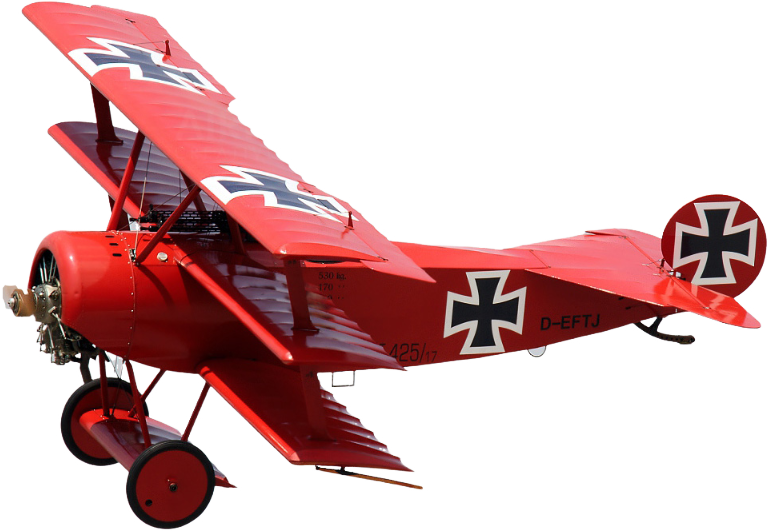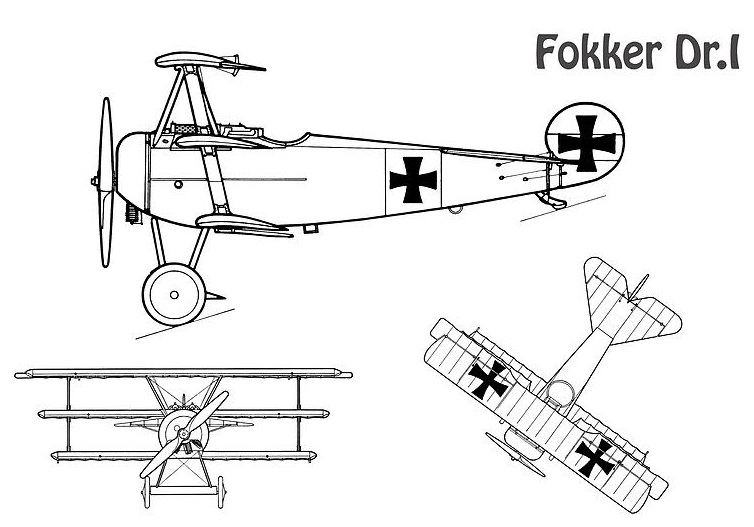
You know that:
- The first serial machines with the designation Dr. They were delivered to the front in a disassembled state on October 11, 1917, and the first plane was ready for takeoff the very next day.
- The public is the fighter Fokker Dr. Even perceived as the most famous aircraft of the First World War, but in fact the machine had many technical shortcomings.
- The triplane design with excess lift allowed the pilot to make wild maneuvers, but level flight speed was low and dive flight was slow.
- Also, thanks to the rotary engine, the fighter was able to maneuver into right turns literally "on a Penny".
- Many aircraft were destroyed due to technical deficiencies, when, for example, a poorly calculated load on the upper wing caused its collapse, or when the aircraft got wet, the wing cover was torn off.
- Another problem was the acute shortage of castor oil during the First World War, and the Voltol substitute lubricant caused numerous engine failures.
- The Fokker plane became famous mainly thanks to a German flying ace named Manfred Albrecht, the bachelor von Richthofen, nicknamed the Red Baron, with 80 kills.
- M. Richthofen was eventually shot down by an accidental bullet from an Australian infantryman while flying low over the ground while stubbornly pursuing the enemy deep in enemy territory.
- The first serious injury in June 1917 by a bullet to the frontal lobe caused a change in his character and therefore he ventured into risky situations that he would have previously solved by retreating.
- The plane was red simply because it was painted that way at the factory and not at the request of the pilot as the legend says.
- With the arrival of a more modern machine DR.VII, all triplanes were gradually phased out and transferred to flight schools as an ideal machine for flight training.
- A total of 320 units were produced.
Technical parameters:
- dimensions: span 7.19m, length 5.77m, height 2.95m
- empty weight 406 kg, take-off weight 586 kg (of which engine 156 kg)
- drive unit 9 cylinder rotary engine Oberursel UR. II with a volume of 15.07 L and a power of 110 hp
- maximum flight speed 185 km/h
- stall speed 72 km/h
- range of 300 km
- maximum flight level 6100 m
- climb rate 5.7 m/s
- main weapon 2x Spandau MG 08/15 7.92 mm synchronized machine gun (1,000 rounds in total)
- rate of fire up to 450 shots/min.
- range 1,200 m
Manfred von Richthofen for the propaganda newspaper Vossische Zeitung March 1918:
I was born to fly, but my path to the cockpit wasn't a direct one. Respecting the family tradition, I joined the cavalry. In the very first weeks of the war, it became clear how ineffective the cavalry is in modern warfare and our regiment was disbanded. I was reassigned to the depot. Well, yes, I did keep an eye on the cheese and egg stock for a few weeks, but it was not for me. Finally in 1915 my application to join the Luftstreikräfte was granted. I guess you know the rest..."
Assembly instructions




